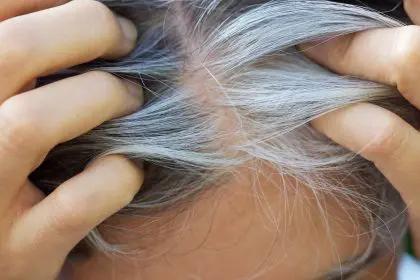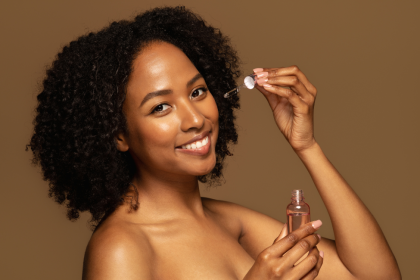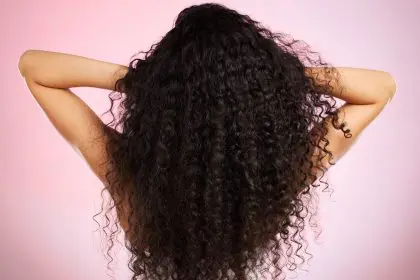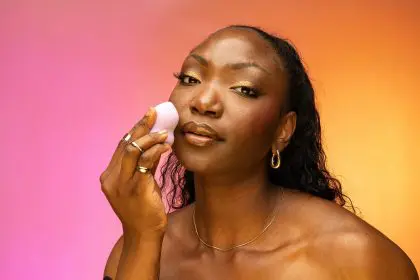Expert dermatologists and stylists reveal proven techniques for maximum hair length

Understanding hair growth
Achieving waist-length hair is a goal that many people pursue, but it requires more than just patience. To achieve this, a comprehensive understanding of hair biology and growth patterns is essential. This guide combines expert insights with practical strategies to help you achieve long, healthy hair.
Growth science
Hair growth is a complex process that goes through several phases. Understanding these phases helps you manage expectations and care for your hair appropriately.
Biological factors
Hair growth occurs in distinct cycles:
- Anagen (growth phase): This phase lasts 2-7 years and is when the hair actively grows.
- Catagen (transition phase): Lasting 2-3 weeks, the hair stops growing and prepares for the next phase.
- Telogen (resting phase): The final phase lasts about 3 months, during which hair falls out and new strands grow in its place.
The average growth rate is typically about 1/2 inch per month, but this can vary depending on several factors.
Foundation for growth
Achieving waist-length hair starts with nurturing the scalp and providing your hair with the right nutrients.
A healthy scalp is crucial for optimal hair growth. Regular cleansing removes buildup and excess oils that can clog hair follicles. You must also maintain your scalp’s pH balance to ensure it stays healthy, as this encourages better hair follicle activity. Proper blood circulation is vital for nourishing hair follicles, and minimizing product buildup helps the scalp breathe and grow hair effectively.
Essential nutrients play a vital role in promoting hair growth. Biotin strengthens hair, while vitamin D supports follicle health. Iron is necessary to prevent hair loss, and zinc aids in keratin production. Protein is crucial because hair is made of protein, and omega-3 fatty acids help nourish both hair and scalp.
Daily care routine
Caring for your hair daily is vital for achieving long and healthy locks. Creating an effective routine can support growth and prevent damage.
When it comes to cleansing your hair, gentle practices should be your go-to. Opt for sulfate-free shampoos that retain moisture and cleanse without stripping natural oils. Wash your hair with lukewarm water instead of hot to prevent dryness, and focus the cleansing process on the scalp rather than the ends. Shampoo frequency should be based on hair type, as too much washing can lead to unnecessary dryness. Additionally, always pat dry your hair gently with a towel to avoid friction, which can cause breakage.
Conditioning your hair properly maintains its moisture balance. Deep conditioning treatments provide much-needed nourishment, while leave-in conditioners keep your hair hydrated throughout the day. Hair oils or serums can lock in moisture and protect your strands. Additionally, balancing moisture and protein treatments is essential for healthy, shiny hair.
Protection strategies
Protecting your hair from damage is essential for growth. This involves both physical protection and environmental defense to preserve the health of your strands.
For physical protection, consider using a silk pillowcase, which reduces friction and prevents breakage. Protective hairstyles, such as braids, shield hair from daily stress, while gentle hair ties and wide-tooth combs can prevent unnecessary tugging. Using a microfiber towel to dry your hair instead of a regular towel can also minimize breakage.
Protecting your hair from external factors like UV rays, pollution, and heat exposure is crucial. Use products that contain UV protection to shield your hair from the sun’s damaging rays. Always apply heat protectants before styling your hair to prevent heat damage. Furthermore, guarding your hair from chlorine and wind exposure ensures it stays healthy, even in harsh environmental conditions.
Growth optimization
In addition to external hair care practices, several lifestyle factors contribute to hair growth.
Supporting your hair’s growth through healthy habits is crucial. Adequate sleep, around 7-9 hours a night, promotes overall health, including hair growth. Chronic stress can stunt growth, so it’s important to manage stress with activities such as yoga or meditation.
Regular exercise improves blood circulation, which is essential for nourishing hair follicles. Hydrating your body by drinking enough water also supports hair health, as hydration plays a key role in maintaining healthy hair strands. Maintaining a balanced diet rich in vitamins, minerals, and proteins provides the nutrients your hair needs to grow strong and healthy.
Certain supplements can boost your hair growth efforts. Hair vitamins that contain biotin, vitamin D, and zinc can promote healthy growth. Collagen supplements, which support skin and hair health, are another option. Mineral supplements such as magnesium and iron can prevent deficiencies that may lead to hair loss. Herbal supplements and essential fatty acids are also beneficial for encouraging growth.
Maintenance phase
Once your hair has reached your desired length, maintaining its health is essential. Regular care and treatment will help sustain your progress.
Long-term care involves weekly treatments, such as deep conditioning, to maintain hydration. Scheduling monthly trims will help prevent split ends and ensure your hair stays healthy. Adjusting your routine to the seasons can also help protect your hair from changing weather conditions. If you’re looking for additional support, consider seeking professional treatments, such as scalp care or hair therapies, to enhance your hair care routine.
Styling your hair carefully also plays a role in maintaining long, healthy strands. Heat-free styling options like braids or twists can reduce damage from heated tools. Loose braids and low-manipulation styles minimize tension, while gentle detangling with a wide-tooth comb or your fingers prevents breakage.
Conclusion
Achieving waist-length hair requires dedication, patience, and a well-rounded approach to hair care. By nurturing a healthy scalp, nourishing your hair with essential nutrients, protecting it from damage, and optimizing your growth through lifestyle changes, you can promote healthy, long hair. Consistency and proper care are key to achieving your hair goals. With these strategies in place, your journey to waist-length hair is entirely possible.














